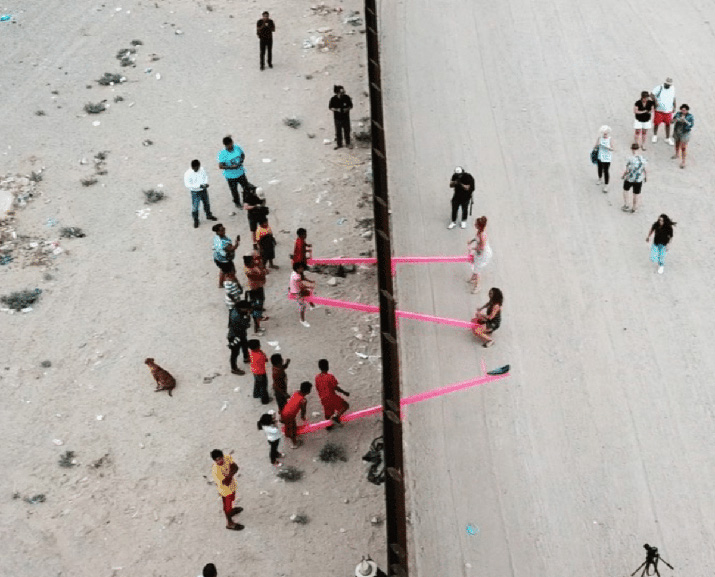A LOOK AT THE BORDER
The pomerium may not have been the first boundary, but it certainly went down in history. When Remus crossed that furrow which his twin Romulus had considered an insurmountable limit, he was pierced by a sword, or a spear, who knows. The legend has various versions, but it perfectly clarifies one of the meanings of the word border: on this side there is me, on the other you. But this vision is impaired. In fact, the Latin etymology of "border" certainly contains the idea of limit (finis), but it is preceded by the prefix with thereby emphasizing the distinct ability of that imaginary line to "hold together" the two dividing parts.
It is always a question of perspective. If it is true that when Caesar passed the Rubicon river in arms he did so to take what was on the other side or that the Berlin wall was built to avoid communication between two areas of the same city then, at the same time, it is also true that Marco Polo crossed several borders to bring back a letter from Kublai Khan for the Pope, precious fabrics and an experience that from that moment on made him see in every foreigner a diversity to discover. Open or close, this is the dilemma. It depends on the circumstances. Today, for example, many borders have been closed to prevent the virus from spreading. But this is nothing new. In the nineteenth century, the Papal States established a “cordon sanitaire” (sanitary cordon) on the northern border, more or less between Lazio and the current Marche, as a preventive measure of isolation between communities affected by infectious diseases of an epidemic nature. A study by Marco Corradi, historian and the man behind the Fas publishing house in Ascoli Piceno who is about to publish the results of his latest research, shows that it was precisely through "border management" that it was possible to stem the epidemic. Just like today.
An imaginary line that separates and at the same time holds two realities close together
Fences can save our lives or kill us, it's up to us. In Europe, the practice of building barriers has caused maybe a few dozen wars, including world wars. The idea of eliminating them, which over time has led to the European Union, has so far guaranteed an abundant seventy years of Peace. Schengen beats barbed wire hands down. Divide, unite, protect, save, condemn, live, die. The border does all this and does it at the same time depending on which side you are, that is to say if it is open, closed, hermetic, penetrable, natural, artificial, recognized or imposed. It is an elusive concept, which can be bent to different interpretations, even opposite ones. Colle di Miravalle could be a good observation point from which to observe this.

18 February, 1966: The new location of Maria Dolens after the transfer from Rovereto Castle to the Colle di Miravalle (Miravalle Hill)






